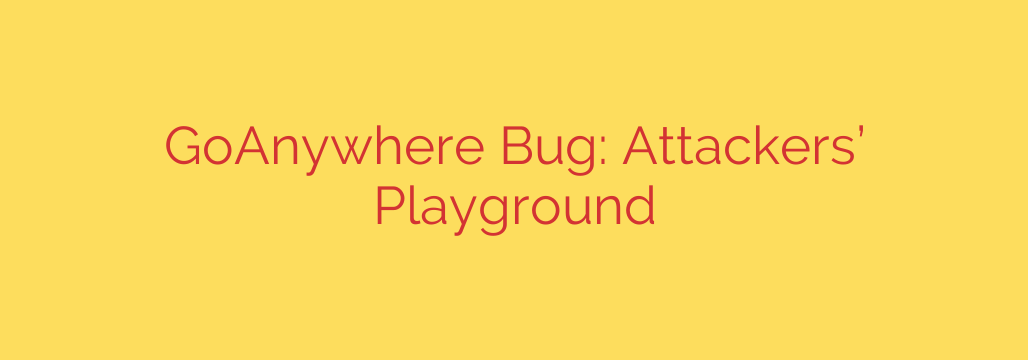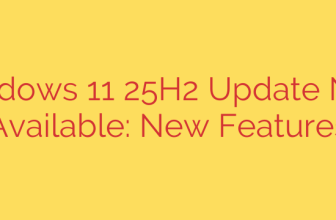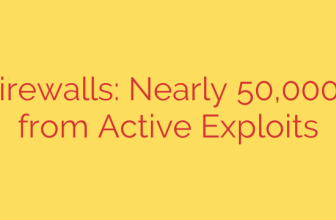
Understanding the Critical GoAnywhere MFT Vulnerability: A Guide to Protecting Your Data
A severe vulnerability in Fortra’s GoAnywhere Managed File Transfer (MFT) software has been actively exploited by cybercriminals, putting countless organizations at risk of significant data breaches. This critical flaw allows attackers to remotely execute code on vulnerable systems, providing them with a direct path to sensitive corporate data.
If your organization uses GoAnywhere MFT, understanding this threat and taking immediate action is paramount to safeguarding your information.
What is the GoAnywhere Vulnerability (CVE-2023-0669)?
The vulnerability, officially tracked as CVE-2023-0669, is a pre-authentication remote code execution (RCE) flaw. This is a particularly dangerous type of vulnerability for several reasons:
- Pre-Authentication: An attacker does not need valid login credentials to exploit the flaw. The vulnerability exists within the administrative web interface, allowing unauthorized access before any authentication check occurs.
- Remote Code Execution: Once exploited, the vulnerability gives attackers the ability to run their own malicious code on the server. This effectively hands them control of the system, enabling them to steal data, install additional malware, or move laterally across your network.
Because GoAnywhere MFT is specifically designed to handle the secure transfer of important files, a compromise of this system is a worst-case scenario. Attackers gain immediate access to the very data the platform was meant to protect.
The Widespread Impact: Data Exfiltration and Ransomware Threats
This isn’t a theoretical threat. Cybercriminal groups, most notably the Clop ransomware gang, have been systematically scanning the internet for vulnerable GoAnywhere instances and exploiting them en masse.
Their primary goal has been data exfiltration. Attackers are using their access to:
- Steal large volumes of sensitive files: This includes financial records, customer data, intellectual property, and other confidential information.
- Deploy ransomware: After exfiltrating the data, attackers may deploy ransomware to encrypt the victim’s systems, creating a two-pronged extortion scheme.
- Threaten to leak stolen data: The Clop ransomware group is known for its double-extortion tactics, where they demand a ransom payment not only to decrypt files but also to prevent the public release of the stolen data.
This coordinated campaign has already impacted numerous organizations across various sectors, including healthcare, finance, and technology, leading to significant operational disruption and data security crises.
Actionable Steps: How to Secure Your GoAnywhere MFT Instance
Protecting your organization requires immediate and decisive action. If you are running a GoAnywhere MFT instance, follow these critical security steps without delay.
1. Patch Immediately
Fortra has released an emergency patch to fix this vulnerability. The single most important step you can take is to update your GoAnywhere MFT software to version 7.1.2 or later. Applying this patch closes the security hole and prevents attackers from exploiting it. Do not postpone this update.
2. Apply Official Mitigations if Patching is Delayed
If you are unable to apply the patch immediately, Fortra provided a temporary workaround to mitigate the risk. This involves deleting the InitialAccountSetup.xhtml file in the installation directory and restarting the service. While effective, this should be considered a temporary fix until you can deploy the official patch.
3. Hunt for Indicators of Compromise (IOCs)
Since this vulnerability has been actively exploited, it is crucial to investigate whether your system has already been compromised. Your security team should:
- Review server logs for any unusual activity, especially in the days and weeks before the vulnerability was publicly disclosed. Look for suspicious error messages or access patterns related to the administrative console.
- Check for unauthorized user accounts that may have been created by attackers.
- Monitor outbound network traffic for any large, unexpected data transfers that could indicate data exfiltration.
4. Rotate All Credentials
As a precautionary measure, rotate all passwords and credentials associated with your GoAnywhere MFT instance. This includes admin accounts, service accounts, and any API keys or other secrets stored on the system. If an attacker gained access, this will help revoke any foothold they may have established.
The GoAnywhere MFT vulnerability is a stark reminder of the sophisticated and fast-moving nature of modern cyber threats. Proactive patch management, vigilant monitoring, and a rapid incident response plan are essential to defending against attacks that can cause devastating financial and reputational damage.
Source: https://go.theregister.com/feed/www.theregister.com/2025/09/26/an_apts_playground_goanywhere_perfect10/








